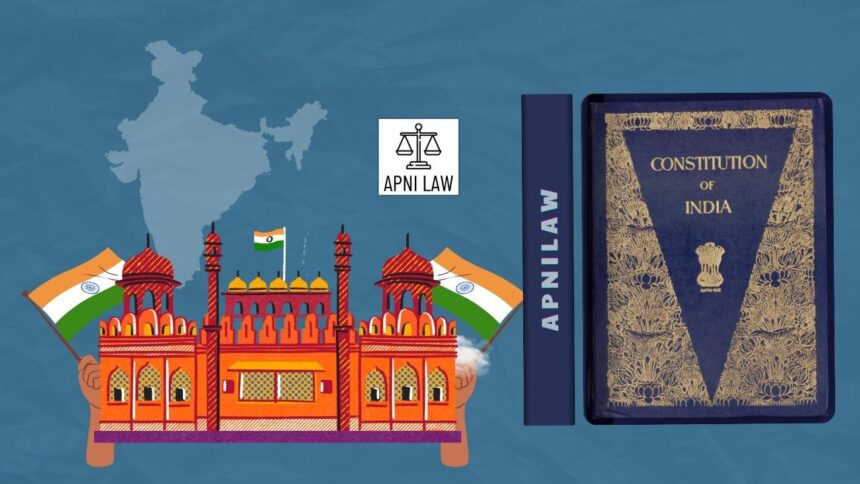The Eighth Schedule of the Indian Constitution recognizes India’s linguistic diversity by granting official status to 22 major languages. This constitutional provision ensures the preservation, promotion, and development of these languages while strengthening cultural unity and administrative inclusiveness.
What Is the Eighth Schedule of the Indian Constitution?
The Eighth Schedule is part of the Indian Constitution that grants official recognition to selected Indian languages. It originally included 14 languages when the Constitution came into effect in 1950. Over time, it expanded through constitutional amendments, now covering 22 languages.
The schedule operates under Articles 344(1) and 351, empowering the Union to promote Hindi while safeguarding the diversity of regional languages. It represents a vital constitutional effort to ensure that linguistic identity remains integral to India’s democratic and cultural framework.
How Did the Eighth Schedule Evolve Over Time?
At the time of India’s independence, the framers of the Constitution faced the challenge of accommodating hundreds of spoken languages. Initially, 14 languages were added to the Schedule, Assamese, Bengali, Gujarati, Hindi, Kannada, Kashmiri, Malayalam, Marathi, Odia, Punjabi, Sanskrit, Tamil, Telugu, and Urdu.
Later, more languages gained recognition through constitutional amendments. Sindhi was added in 1967 by the 21st Amendment. Konkani, Manipuri, and Nepali were included in 1992 through the 71st Amendment. The 92nd Amendment in 2003 added Bodo, Dogri, Maithili, and Santali.
This evolution reflects India’s ongoing commitment to represent its linguistic diversity and ensure equal recognition of different linguistic groups across regions.
Why Is Recognition under the Eighth Schedule Important?
Recognition under the Eighth Schedule gives a language constitutional status. It allows its use in Parliamentary proceedings, government administration, education, and judiciary. Once recognized, the language becomes eligible for central government funding for its development and preservation.
It also provides linguistic communities with social empowerment and cultural legitimacy. Recognition means that the language gains visibility in public life, government communication, and education policy.
Furthermore, scheduled languages are often used in competitive examinations like UPSC, ensuring inclusivity in recruitment and governance.
How Does the Eighth Schedule Protect Linguistic Rights?
The Indian Constitution safeguards linguistic rights through various provisions. Article 29 grants citizens the right to conserve their distinct language, script, or culture. The Eighth Schedule strengthens this right by ensuring state support for linguistic preservation.
Articles 344 and 351 link the Eighth Schedule to the Official Languages framework. While Article 344 establishes the Official Languages Commission, Article 351 directs the Union to promote Hindi while drawing on vocabulary and styles from other Indian languages. This ensures a balanced linguistic policy that promotes unity without neglecting diversity.
What Is the Current List of Eighth Schedule Languages?
As of 2025, the Eighth Schedule recognizes 22 official languages: Assamese, Bengali, Bodo, Dogri, Gujarati, Hindi, Kannada, Kashmiri, Konkani, Maithili, Malayalam, Manipuri, Marathi, Nepali, Odia, Punjabi, Sanskrit, Santali, Sindhi, Tamil, Telugu, and Urdu.
These languages represent four major linguistic families, Indo-Aryan, Dravidian, Austroasiatic, and Sino-Tibetan. This reflects the vast linguistic and cultural mosaic that defines India’s national identity.
What Are the Legal and Administrative Implications of Inclusion?
Being part of the Eighth Schedule brings tangible administrative and legal benefits. Recognized languages can be used in official correspondence, education, and state administration. They are also used in Union Public Service Commission examinations, allowing speakers to appear in their native language.
The government also provides financial grants for developing literature, translating texts, and promoting research. Institutions such as the Sahitya Akademi promote these languages through awards and publications.
In the judiciary, scheduled languages receive recognition for use in state courts, depending on legislative approval. This helps citizens access justice in their mother tongue, enhancing fairness and accessibility.
Why Are There Demands for More Languages in the Eighth Schedule?
India’s linguistic diversity extends far beyond the 22 scheduled languages. Currently, there are demands to include 38 more languages, such as Bhojpuri, Rajasthani, Tulu, Garhwali, and Angika. Proponents argue that inclusion preserves cultural identity and offers equitable access to state resources.
However, the process is complex. Adding new languages requires constitutional amendment, which must balance administrative feasibility with cultural recognition. Critics warn that expanding the list may complicate governance and dilute existing resources.
Despite these challenges, the demands highlight India’s evolving linguistic consciousness and the ongoing efforts to recognize every community’s voice.
How Does the Eighth Schedule Contribute to National Integration?
The Eighth Schedule strengthens national integration by embracing linguistic pluralism. It acknowledges that India’s unity lies in diversity. By granting official recognition to multiple languages, it ensures that citizens feel represented regardless of their linguistic background.
The Schedule also prevents dominance by a single language, promoting equality among linguistic communities. It encourages intercultural dialogue and fosters a sense of belonging among diverse populations.
This inclusive approach aligns with India’s democratic ideals, where every language is seen as a cultural asset rather than a barrier.
What Role Does the Eighth Schedule Play in Education and Culture?
In education, the Eighth Schedule influences curriculum development and teaching in regional languages. Schools and universities offer courses in scheduled languages, preserving literature, folklore, and regional traditions.
Culturally, it protects oral traditions, poetry, music, and art forms that are deeply tied to language. The recognition of these languages under the Eighth Schedule ensures they are documented, researched, and celebrated at both regional and national levels.
Government initiatives and organizations such as Central Institute of Indian Languages (CIIL) and Sahitya Akademi actively promote linguistic research, translation projects, and publication programs.
What Is the Future of Language Inclusion in India?
As India continues to modernize, the conversation around linguistic inclusion grows stronger. The digital age has further empowered regional languages through social media, entertainment, and e-governance.
However, expanding the Eighth Schedule will require a careful balance between recognition and practicality. The government must assess linguistic strength, literature availability, and population of speakers before granting official status.
Future policies may focus on digitizing regional languages, improving translation technology, and promoting language education to bridge gaps between linguistic communities.
For any specific query call at +91 – 8569843472
Conclusion
The Eighth Schedule of the Indian Constitution is a cornerstone of India’s linguistic policy. It upholds the constitutional vision of unity in diversity by officially recognizing 22 languages that reflect the nation’s cultural wealth.
Beyond symbolism, it provides tangible benefits in governance, education, and socio-economic inclusion. The Schedule continues to evolve as new languages seek recognition, reflecting the dynamic nature of India’s multilingual society.
By protecting and promoting linguistic diversity, the Eighth Schedule ensures that every language, big or small, remains a living part of India’s heritage and democratic identity.








